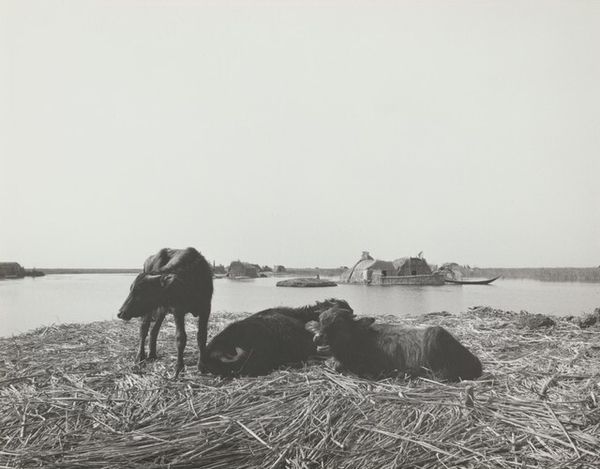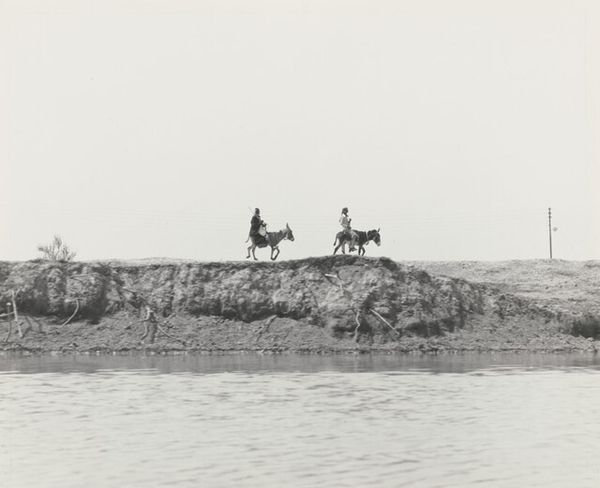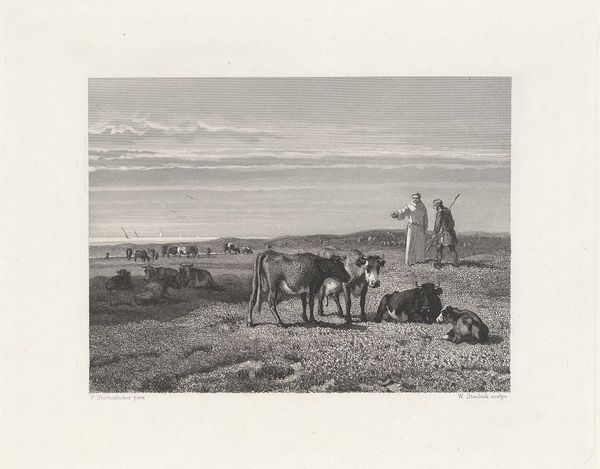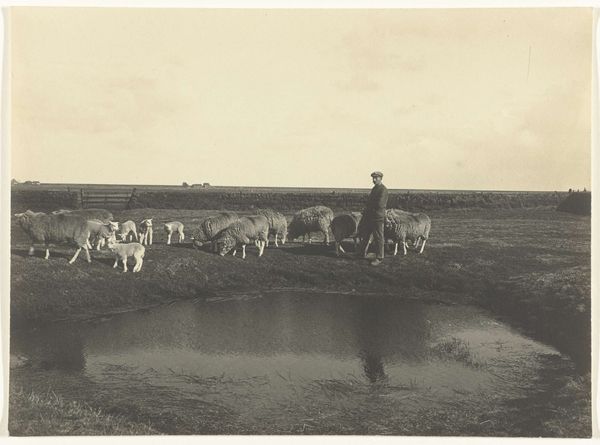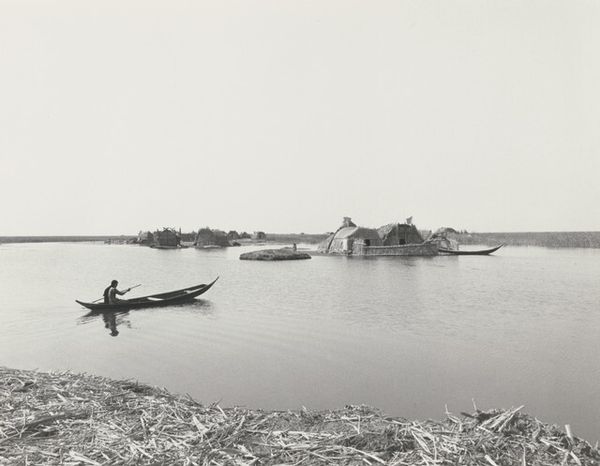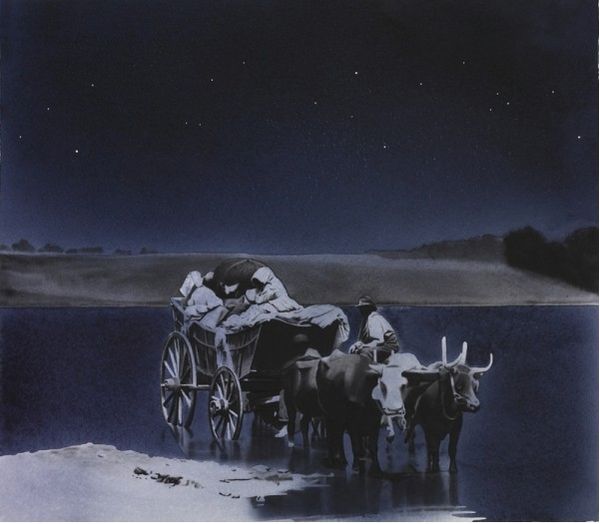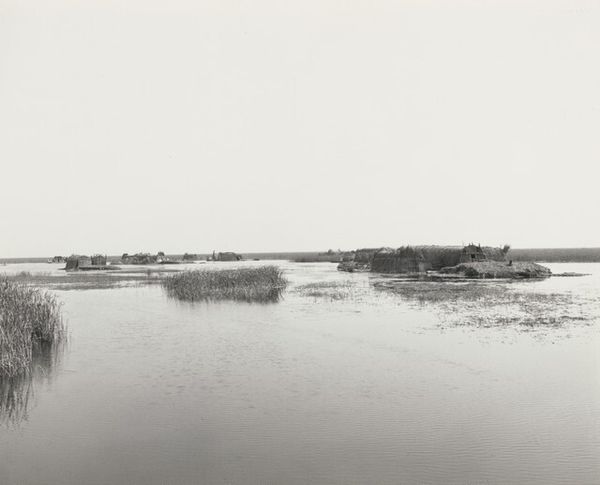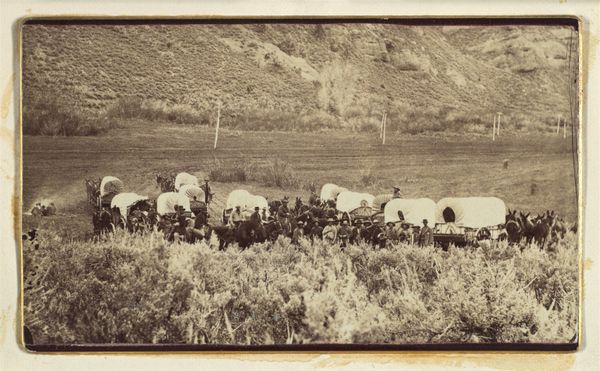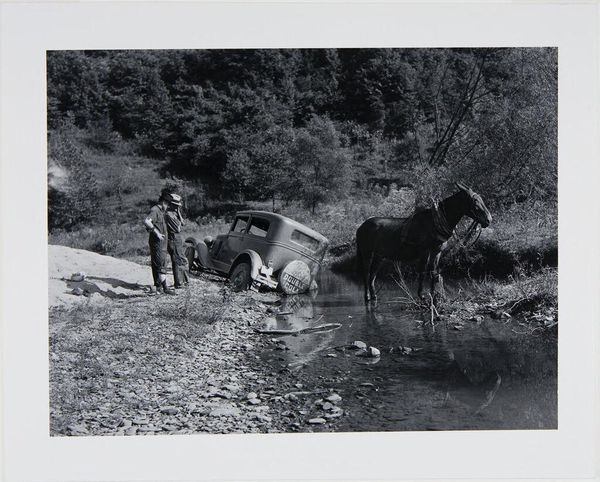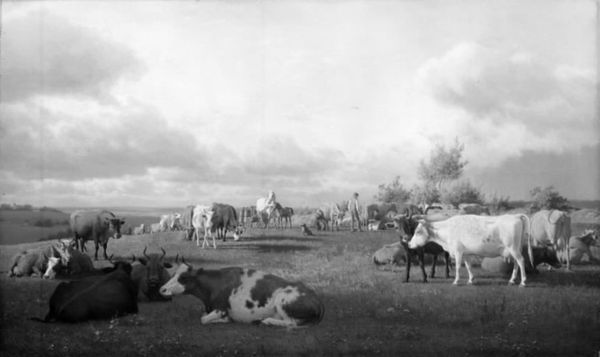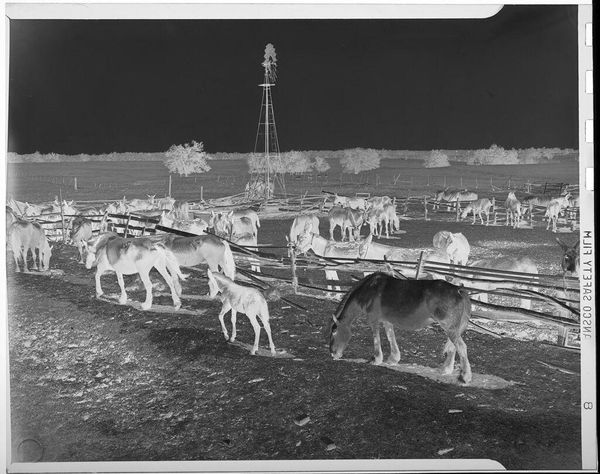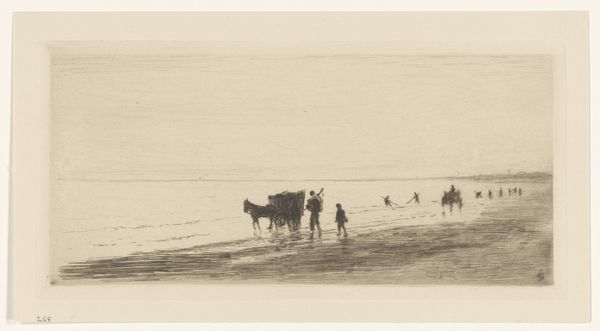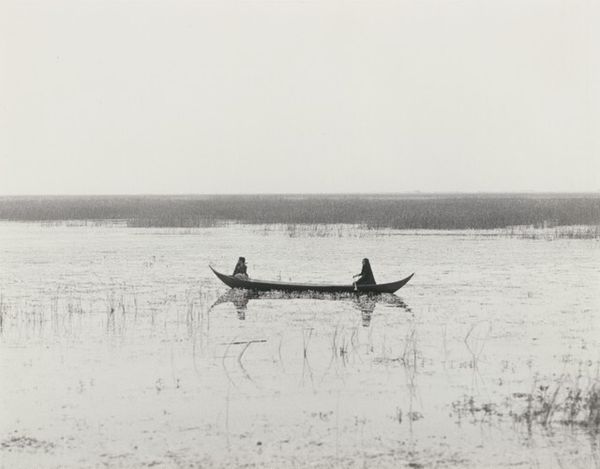
photography, gelatin-silver-print
#
excavation photography
#
black and white photography
#
countryside
#
landscape
#
black and white format
#
photography
#
outdoor scenery
#
black and white
#
gelatin-silver-print
#
monochrome photography
#
outdoor activity
#
monochrome
#
realism
#
shadow overcast
Dimensions: image/sheet: 23.6 × 30.3 cm (9 5/16 × 11 15/16 in.)
Copyright: National Gallery of Art: CC0 1.0
Curator: This untitled gelatin-silver print by Ursula Schulz-Dornburg, taken in 1980, presents us with a stark landscape dominated by light and shadow. What's your immediate reaction to it? Editor: There’s an almost biblical stillness, a scene out of time. The high contrast lends it a quality of starkness and isolation that's very striking. The woman in dark clothing, grouped with the livestock. It makes you consider a long history of human-animal relations. Curator: Indeed. Black and white photography here invites us to delve into a specific emotional territory. Think of archetypes. A single woman against an expansive horizon evokes a strong feeling of cultural memory, of enduring human presence in difficult landscapes. The animals almost take on a symbolic weight as well. Editor: And aren’t we always shaping and reshaping how women interact with rural, often impoverished, communities? This could be any place where resources are scarce and labour devalued. Even the uniformity of the cattle suggests systems, control, even, potentially, violence. Curator: Violence? It feels more observational than accusatory. Editor: Well, the scarcity implies certain choices that aren’t free at all. If we consider how deeply entwined the oppression of women and nature continues to be, this image could be understood as bearing witness to that intersection. The very light hitting the landscape and figures is so unforgiving. Curator: I suppose for me, that stark light and shadow also evoke a sense of transcendence. Consider, in many spiritual traditions, black signifies the void and white represents purity, creating a powerful duality reflective of life’s complexities. Editor: Yes, but that simplicity comes at the expense of those who are represented in monochrome themselves, literally reduced to shades of grey in the face of structural problems that demand to be acknowledged. Curator: It’s compelling how Schulz-Dornburg captures what might seem like a straightforward scene and turns it into such fertile ground for divergent interpretations. Editor: Precisely. The picture insists we consider what's missing: stories, nuances, colour. It requires further critical analysis.
Comments
No comments
Be the first to comment and join the conversation on the ultimate creative platform.
